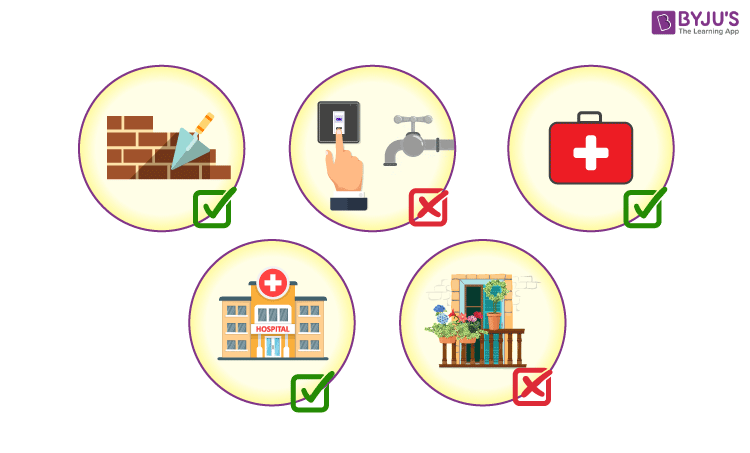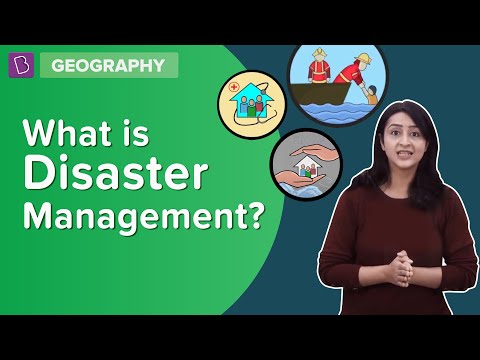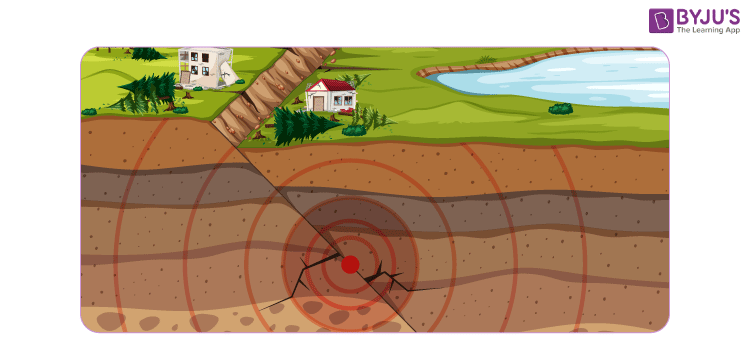Earthquakes are highly destructive natural disasters, leading to significant loss of life and extensive damage to property on a global scale each year. In response, the disaster management committee has implemented various safety measures to minimize the devastating effects of these catastrophic events. Developing effective strategies and promoting disaster management awareness is paramount in mitigating the impact of earthquakes and ensuring our safety. This article aims to provide a comprehensive understanding of earthquakes, including their causes and effects, along with detailed instructions on how to respond during and after an earthquake.
|
Table of Contents |
What is an Earthquake?
An earthquake refers to the shaking of the earth’s surface caused by a sudden release of energy within the earth’s crust. This release of energy generates seismic waves, commonly known as S waves. The intensity and characteristics of an earthquake are determined by the seismic activities occurring in a specific region.

During an earthquake, the stored energy accumulated within the earth’s crust is suddenly released, leading to the rapid movement and displacement of rock masses along fault lines. This movement produces vibrations that propagate through the earth in the form of seismic waves. The two primary types of seismic waves are S (secondary) and P (primary) waves.
S waves, also called shear waves, travel through the earth by causing particles to move perpendicular to the direction of wave propagation. These waves are responsible for the side-to-side shaking motion experienced during an earthquake. On the other hand, P waves, or compression waves, cause particles to move in the same direction as the wave propagation. P waves are the first detected during an earthquake and are responsible for the initial abrupt jolts.
Understanding the nature of earthquakes and the behaviour of seismic waves is crucial for assessing the potential risks associated with these natural disasters. It enables scientists and experts to study seismic patterns, develop early warning systems, establish building codes for earthquake-resistant structures and educate communities on preparedness and response measures.
What Causes an Earthquake?
Earthquakes occur due to sudden tectonic movements within the Earth’s crust. The Earth’s crust is divided into large sections called tectonic plates, which float on the semi-fluid layer known as the asthenosphere. These plates are constantly in motion, albeit very slowly.
When two tectonic plates interact, various types of boundaries can form, such as convergent and divergent and transform boundaries. The most powerful and destructive earthquakes typically occur at convergent boundaries, where two plates collide or slide past each other.
At a convergent boundary, one tectonic plate may be forced beneath another in a process called subduction. As the plates collide or slide past each other, immense pressure and friction build-up. Eventually, the stress becomes too great, causing the rocks along the plate boundaries to break and slip. This sudden release of stored energy generates seismic waves, resulting in an earthquake.

In addition to tectonic movements, other geological activities can also trigger earthquakes. Volcanic activity, for instance, can cause earthquakes when magma rises through the Earth’s crust, creating pressure and fracturing the rocks around the volcano. The disturbances caused by these movements and ruptures within the Earth’s crust generate vibrations that propagate in all directions, shaking the ground. These vibrations are the seismic waves that travel through the Earth and are detected by seismographs.
It’s important to note that the build-up of stress and the subsequent release of energy in the form of shock waves are the fundamental mechanisms behind earthquakes. The magnitude or strength of an earthquake is determined by the amount of energy released during this process.
Delve Deeper into the Causes of Earthquakes
We present to you an insightful video that explores the fascinating mechanisms behind seismic activity. By watching this video, you’ll gain a deeper understanding of how earthquakes are caused and the factors that contribute to their occurrence.

What to do During an Earthquake?
When it comes to earthquakes, being prepared can make all the difference. Here are some essential steps to take before the disaster strikes:
Before the Earthquake

- Make Connections Flexible
Ensure that gas lines and appliances are properly installed with flexible connections. This helps prevent gas leaks and reduces the risk of fire hazards during an earthquake.
- Create an Earthquake Readiness Plan
Develop a well-thought-out plan that includes identifying a shelter area in your home. Stock up on essential supplies such as canned food, a well-stocked first aid kit, ample water, dust masks, goggles, firefighting equipment, a flashlight and a working battery-operated radio. These provisions will prove invaluable in the event of an earthquake.
- Consult Architects and Structural Engineers
Building sturdy structures is vital for minimizing earthquake damage and ensuring the safety of occupants. If you reside in an earthquake-prone area, it’s crucial to consult with architects and structural engineers before constructing buildings. They can guide you in implementing the necessary measures and adhering to regulations set by the disaster management committee.
- Spread Awareness
Share the knowledge and importance of earthquake preparedness with your friends and family. By educating those around you, you contribute to creating a safer community.
During the Earthquake

When an earthquake strikes, quick thinking and appropriate actions can save lives. Here are some important guidelines to follow:
- Stay Indoors
Remain indoors until the shaking stops and it is officially announced that it is safe to exit. Taking cover beneath a sturdy table or bed can provide vital protection against falling objects.
- Avoid Hazardous Areas
Steer clear of bookcases, heavy furniture and appliances that may topple over during the earthquake. Your safety should always be the top priority.
- Find a Safe Spot
Seek shelter under a sturdy piece of furniture, such as a table or bed. Hold on to a post or any other fixture to maintain stability and minimize the risk of injury.
- If Outdoors, Move to an Open Area
If you are outside when the earthquake occurs, find a clear spot away from buildings, trees and power lines. These objects pose a significant danger during seismic activity.
After the Earthquake

Once the earthquake subsides, it’s important to proceed with caution and take the following measures:
- Administer First Aid
Attend to individuals with minor injuries using first aid kits. For those with more severe injuries, it’s essential to wait for professional medical help and avoid moving them until it is safe.
- CPR and Rescue Breathing
If someone is not breathing, administer rescue breathing. If the person has no pulse, perform CPR (cardiopulmonary resuscitation) until medical assistance arrives.
- Be Mindful of Hazards
Attend any tumbling shelves or falling items and be cautious around damaged walls made of bricks or other unstable materials. Your safety should be a priority.
- Check Gas and Power Connections
Inspect gas valves for leaks and turn off the main power switch if damage is possible. Unplug broken appliances until they can be properly repaired.
- Stay Clear of Power Lines
Keep a safe distance from downed power lines and any objects or appliances in contact with them. Electricity poses a significant risk, so exercise caution.
By following these guidelines, you can ensure your safety and the well-being of those around you during and after an earthquake. Remember, preparedness and knowledge are key to effectively managing these natural disasters. Stay informed and stay safe!
Enhancing Preparedness with Disaster Management
In times of uncertainty, being equipped with the knowledge and strategies to navigate through natural disasters is crucial. In this section, we present an insightful video that sheds light on the broader concept of disaster management and its significance during both predicted and unpredictable calamities.

What are the Effects of an Earthquake?

Earthquakes can have a wide range of effects, varying in severity depending on factors such as the quake’s magnitude, the depth of its epicentre and the local geology. Here are some of the primary effects caused by earthquakes:
- Ground Shaking: When an earthquake occurs, the release of energy creates seismic waves that cause the ground to shake. The intensity of the shaking can vary depending on factors such as the magnitude of the earthquake, the distance from the epicentre and the local geology. Areas closer to the epicentre usually experience more intense shaking, which can significantly damage structures and infrastructure.
- Damage to Man-Made Structures: One of the most noticeable effects of an earthquake is the damage it can cause to buildings, bridges, roads and other man-made structures. The shaking can lead to structural failure, collapse and extensive damage, especially if the buildings are not designed or constructed to withstand seismic activity. The severity of the damage depends on factors such as the quality of construction, adherence to building codes and proximity to the epicentre.
- Fires and Hazardous Chemical Spills: Earthquakes can trigger secondary hazards, such as fires and hazardous material spills. The violent shaking can rupture gas pipelines, damage electrical systems and disrupt infrastructure, leading to the ignition of fires. Additionally, earthquakes can cause the release of hazardous chemicals stored in industrial facilities, posing risks to human health and the environment. These secondary effects can further exacerbate the impact of an earthquake and complicate rescue and recovery efforts.
- Landslides and Avalanches: In areas with steep slopes or unstable terrain, earthquakes can trigger landslides and avalanches. The shaking can destabilize slopes, causing rocks, soil and debris to slide downhill. Landslides can damage structures, block roads and even bury entire communities, leading to additional casualties and hindering rescue and relief operations access.
- Tsunamis: Underwater earthquakes can generate tsunamis, particularly those occurring along tectonic plate boundaries. These massive ocean waves can travel long distances, reaching coastal areas and causing devastating flooding. Tsunamis pose a significant threat to coastal communities and can result in widespread destruction and loss of life.
Understanding the potential effects of earthquakes is crucial for implementing appropriate mitigation measures and developing effective disaster response plans. It is important to note that these are just some of the effects that earthquakes can have. The severity and extent of these effects depend on various factors, including the earthquake’s characteristics, the impacted area’s location and the affected communities’ preparedness and resilience.
|
Related Articles |
Understanding Seismograph and the Richter scale
A seismograph and the Richter scale are essential tools used in seismology to understand and characterise earthquakes. While they are related to each other, they serve different purposes. Here’s an elaboration on the difference between a seismograph and the richter scale.
Seismograph

- A seismograph is a device used to measure and record the vibrations or ground motions caused by earthquakes.
- It consists of a ground motion sensor, typically a mass attached to a fixed base and a recording system that captures the movements detected by the sensor.
- Seismographs are essential in monitoring seismic activity, as they provide valuable data about the intensity, duration and frequency of ground shaking.
- By analyzing the recorded seismograms, scientists can determine various characteristics of an earthquake, such as its magnitude, location and focal depth.
- Seismographs also detect other seismic events, such as volcanic eruptions and underground explosions.
Richter scale
- The Richter scale, developed by Charles F. Richter in the 1930s, is a numerical scale used to quantify the magnitude or strength of an earthquake.
- It measures the energy released during an earthquake by analyzing the amplitude of seismic waves recorded on seismographs.
- The Richter scale is logarithmic, meaning that each whole number increase on the scale corresponds to a tenfold increase in the amplitude of the seismic waves and approximately 31.6 times more energy released. For example, a magnitude six earthquake releases about 31.6 times more energy than a magnitude five earthquake.
- The Richter scale provides a standardized measurement for consistent comparison of worldwide earthquake magnitudes.
Difference Between Seismograph and Richter scale
|
Seismograph |
Richter scale |
|
Used for measuring and recording the vibrations of earthquakes |
Used for indicating the intensity of an earthquake |
|
Used for measuring the motions related to the ground, like seismic waves resulting in earthquake and volcanic eruptions |
Used for quantifying the energy that is released during an earthquake |
In summary, a seismograph is a device used to measure and record the ground motions caused by earthquakes. The Seismograph provides the data necessary to calculate the magnitude of an earthquake, which is then represented on the Richter scale. At the same time, the Richter scale is a numerical scale used to quantify the energy released during an earthquake. Together, these tools help seismologists and scientists better understand and characterise seismic events, enabling them to assess the impact and potential hazards associated with earthquakes.
Frequently Asked Questions – FAQs
What is an earthquake?
An earthquake is shaking the Earth’s surface caused by a sudden release of energy within the Earth’s crust. It generates seismic waves, commonly known as S waves, and its intensity and characteristics are determined by the seismic activities occurring in a specific region.
What causes an earthquake?
Earthquakes occur due to sudden tectonic movements within the Earth’s crust. These movements result from interactions between tectonic plates, large sections of the Earth’s crust that float on the semi-fluid layer known as the asthenosphere. When stress along plate boundaries becomes too great, rocks along the boundaries break and slip, releasing stored energy and generating seismic waves.
What should I do during an earthquake?
It is important to take appropriate actions during an earthquake to ensure safety. Some key steps to follow include staying indoors, taking cover under a sturdy piece of furniture, avoiding hazardous areas, and, if outdoors, moving to an open area away from buildings, trees and power lines.
What should I do before an earthquake?
What are the effects of an earthquake?
Earthquakes can have various effects, including ground shaking, damage to man-made structures, fires and hazardous chemical spills, landslides and avalanches and the generation of tsunamis in coastal areas. The severity of these effects depends on factors such as the earthquake’s magnitude, depth and local geology.
What is the difference between a seismograph and the Richter scale?
A seismograph is a device used to measure and record the vibrations or ground motions caused by earthquakes. It provides the data necessary to calculate the magnitude of an earthquake. On the other hand, the Richter scale is a numerical scale used to quantify the energy released during an earthquake. It provides a standardized measurement for comparing earthquake magnitudes worldwide.









Very good article
thank u for info
it helped me for my project work
#thanks
The definitions are very good and useful.
Yes I also like it because it help me in project………..
Thank you for this amazing article.
Nice,I like the byjus app
The definitions really helped me
Thanks 😊👍
i got a birilliant idea from this content !
thnx for such content !
nice information
The content written here is quite and very good ☺️👍 appreciated
Nice
Nice answer
very good , it helped in my project alot
It’s really nice 🙂